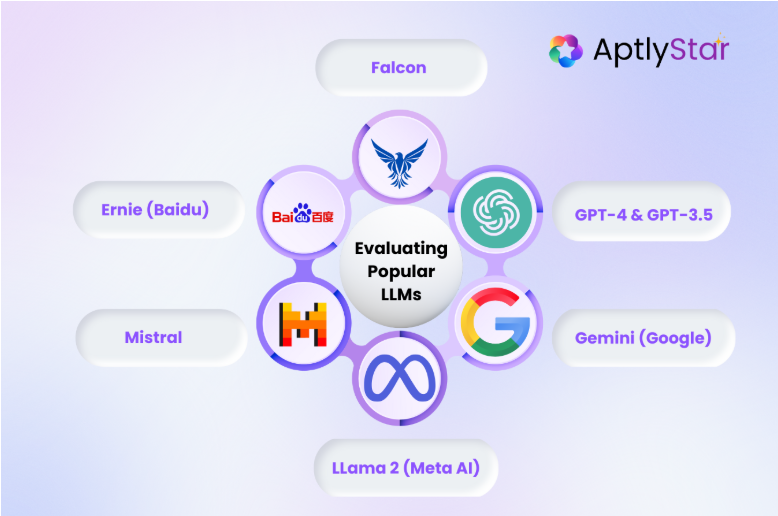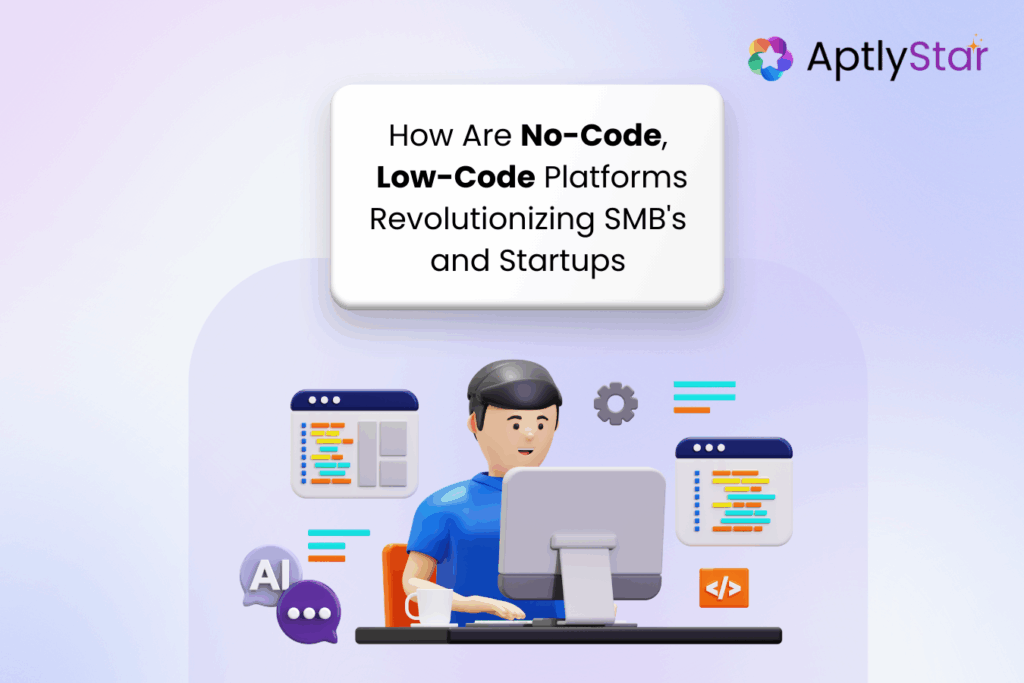Choosing the Best LLM for Chatbot Development: A Complete Guide

With the rapid evolution of AI chatbots models, it’s essential to choose the right model for your business. The choice of LLM can make or break your chatbot’s performance, accuracy, and overall customer experience. As businesses increasingly adopt AI for automating customer support, marketing, and personalized experiences, understanding the strengths and limitations of different LLMs becomes critical.
In this blog, we’ll explore some of the top LLM for chatbot development and discuss the evaluation criteria that matter most—accuracy, speed, cost, hallucinations, and instruction following. We’ll also cover emerging models like GPT-4, Falcon, and Gemini, which are making waves in the industry.
Evaluating Popular LLMs: A Look at the Best Options

When it comes to building an AI chatbot, it’s important to remember—there’s no one-size-fits-all. The best LLM for chatbot development depends on the nature of your business, your chatbot’s specific goals, and the resources you have available. Let’s dive into some of the popular LLMs that are leading the chatbot development space.
- GPT-4 and GPT-3.5 (OpenAI and Azure)
GPT-4 is one of the most well-known and widely used models for chatbot development. With its powerful natural language processing capabilities, GPT-4 can handle complex queries, provide accurate responses, and follow instructions precisely. OpenAI and Azure both offer GPT-4, but their performance characteristics differ slightly based on infrastructure. For enterprises dealing with high-value customers, GPT-4 offers unmatched accuracy, making it the best choice for businesses where errors can have legal or financial consequences. - LLama 2 (Meta AI)
Meta’s LLama 2 is a highly flexible, open-source model that’s widely used for chatbot development. While the vanilla LLama 2 isn’t instruction-tuned, the “inst” version (LLama 2 inst) is, making it better at following specific user instructions. With its open weights and permissive licensing, it’s a popular choice for businesses looking for customization at scale. LLama 2 is cost-effective and ideal for businesses that want more control over model fine-tuning. - Mistral
Mistral’s models, known for their speed and low cost, have been a game-changer in the LLM space. For small to medium-sized businesses looking for a balance of speed, accuracy, and cost, Mistral offers excellent value. While it may not match GPT-4’s accuracy, when fine-tuned and integrated with safeguards, it can perform remarkably well. - Ernie (Baidu)
Ernie, Baidu’s flagship LLM, powers the Ernie 4.0 chatbot and boasts an impressive 10 trillion parameters. Though it excels in Mandarin, Ernie is capable of handling multiple languages. With over 45 million users, Ernie’s capabilities make it a strong contender in markets where multilingual support is critical. While Ernie is relatively new in the international scene, it’s expected to play a growing role in global chatbot applications. - Falcon (Technology Innovation Institute)
Falcon, an open-source, multilingual transformer model family, offers several powerful versions, including Falcon 2 with multimodal capabilities and Falcon 40B and 180B for larger-scale tasks. Its open-source nature makes it highly adaptable and cost-effective for businesses looking to leverage both text and vision capabilities. Falcon models are widely available on GitHub and cloud platforms, including AWS, providing easy access for developers. - Gemini (Google)
Gemini, Google’s next-gen LLM, has recently replaced Palm in its chatbot offerings. Gemini’s multimodal capabilities, allowing it to handle text, images, audio, and video, set it apart from other models. Available in Ultra, Pro, and Nano sizes, Gemini is a versatile option for a range of tasks, from lightweight on-device tasks to robust enterprise-level applications. Google’s continuous innovation with models like Gemini 1.5 Pro and previews of Gemini 2.0 are positioning it as a leader in LLMs with real-time multimodal generation capabilities.
Evaluation Criteria That Matter
Now that we’ve covered some of the top LLM for chatbot development, let’s look at the evaluation criteria that can help you decide which model is right for your chatbot:
- Accuracy: For businesses where precision is paramount (think legal firms, financial institutions, or airlines), GPT-4 or a fine-tuned proprietary model is likely your best bet. You need a model that can minimize hallucinations—situations where the AI fabricates information.
- Speed: Smaller LLMs like Falcon 2 or Mistral shine when speed is a critical factor. They provide quick responses, ideal for real-time customer-facing chatbots.
- Cost: If budget is a concern, non-proprietary models like LLama 2 and Mistral offer excellent alternatives to GPT-4, especially when fine-tuned to your domain-specific needs. The difference in cost can be staggering—Mistral can be 1/100th the cost of GPT-4.
- Hallucinations: No chatbot can be 100% free from hallucinations, but the key is minimizing them. GPT-4 remains the most reliable, though non-proprietary models like Falcon or Gemini, when used with strong safeguards, also perform well.
- Instruction Following: Some models are better at following instructions than others. LLMs like GPT-4 and LLama 2 inst have been instruction-tuned, ensuring they follow user directives accurately. Gemini, with its recent updates, also stands out in this regard.
Key Recommendations Based on Business Needs
For Large Enterprises: Prioritizing Accuracy and Reliability
Large enterprises, especially those in sectors like aviation or B2B software, cannot afford inaccuracies in customer interactions. Models like Azure GPT-4, offered by Microsoft, provide robust solutions with high accuracy rates. Azure’s integration with services like Cognitive Search ensures that chatbots can access and retrieve pertinent information efficiently, enhancing response quality.
For Small to Mid-Sized Businesses: Balancing Cost with Performance
Cost-effective models such as Mistral and Falcon 2 offer a good balance between performance and affordability. Mistral’s open-weight models allow developers to fine-tune and customize according to specific needs, providing flexibility without significant investment.
Similarly, Falcon 2’s multimodal capabilities make it suitable for businesses aiming to engage users across various content types without incurring high costs.
For Businesses Seeking Efficiency with Multimodal Capabilities
Google’s Gemini Nano is designed for efficiency, handling text, images, and video inputs effectively. This makes it a suitable choice for businesses looking to provide rich, multimedia customer interactions without overburdening their resources.
For Hybrid Needs: Leveraging Multiple Models for Optimal Performance
A hybrid approach can be beneficial, combining models to leverage their unique strengths. For instance, using GPT-3.5 for general queries ensures comprehensive coverage, while deploying Falcon 2 for real-time interactions can enhance responsiveness. This strategy allows businesses to optimize performance across various interaction types.
Case Study: Transforming HR Operations with AptlyStar’s AI Automation
Challenge: Managing Resume Screening, Onboarding Queries, and Policy Updates
A leading HR firm struggled with high volumes of repetitive HR queries, including resume screening, onboarding assistance, and frequent policy updates. HR teams spent excessive time on manual processes, leading to delayed responses, inefficiencies, and employee dissatisfaction. Ensuring accuracy and compliance in responses was also a critical concern, as incorrect information could lead to compliance risks.
Solution: AI-Powered Automation with AptlyStar and Azure OpenAI
To address these challenges, the firm implemented AptlyStar’s AI-driven HR automation, powered by Azure OpenAI’s GPT-4 and GPT-3.5 Turbo.
- Onboarding Queries: GPT-3.5 handled general onboarding FAQs, providing instant responses.
- Policy Updates: GPT-4 ensured HR policy-related answers were accurate and aligned with compliance requirements.
- RAG Implementation: Retrieval-Augmented Generation (RAG) was used to ensure responses were based strictly on verified HR documentation, eliminating hallucinations.
Result: Increased Efficiency and Employee Satisfaction
By leveraging AptlyStar’s AI automation, the HR firm achieved:
✅ 60% reduction in response time for HR queries.
✅ 40% increase in HR team productivity, allowing them to focus on strategic initiatives.
✅ Higher employee and candidate satisfaction with instant, accurate responses.
✅ Improved compliance and accuracy, minimizing the risk of misinformation in policy updates.
With AptlyStar’s AI-powered HR automation, the firm successfully streamlined its operations, enhancing efficiency and employee experience while ensuring compliance and accuracy.
The Fast-Evolving LLM Landscape
With continuous advancements in LLMs, the future of AI chatbot development looks incredibly promising. As models like Gemini 2.0 and Falcon 2 evolve, we expect even greater capabilities in real-time multimodal interaction, accuracy, and affordability. If you’re exploring LLM for chatbot development, now is the perfect time to leverage these innovations for enhanced automation and user engagement.
If you’re on your own journey to develop a chatbot or need guidance in choosing the right LLM, we’d love to chat with you! Whether you’re focused on customer support automation, real-time interactions, or multimodal capabilities, there’s an LLM out there that’s perfect for your needs.
Meta Title: LLM for Chatbot Development – Build Smarter AI Conversations
Meta Description: LLM for Chatbot Development is transforming AI with real-time interactions, automation, and multimodal capabilities for enhanced user engagement.





